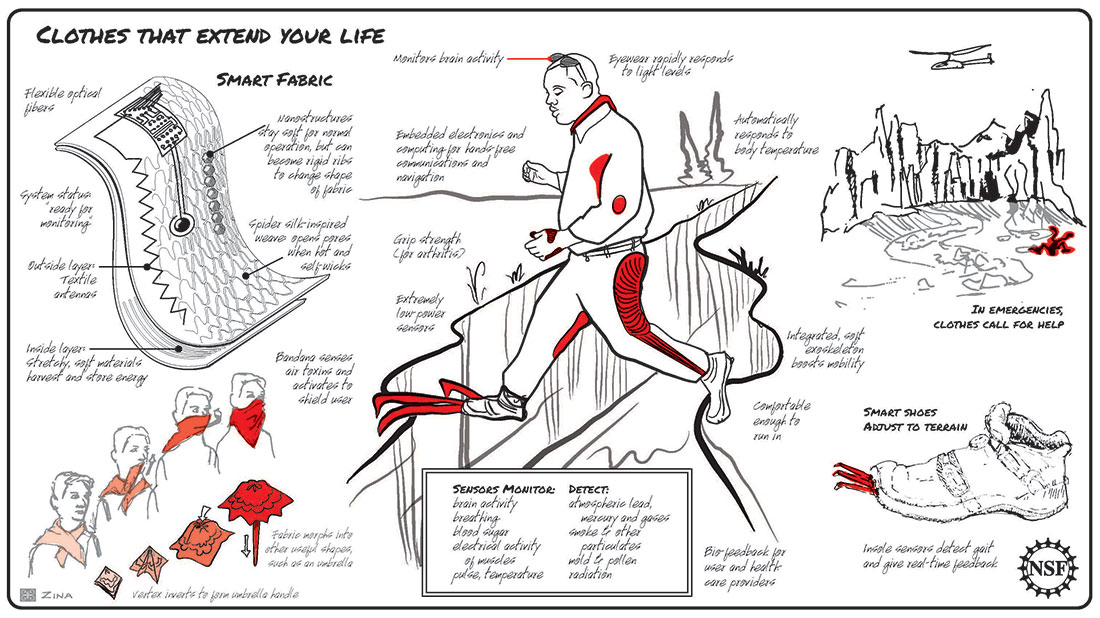
Fantastical thinking, grounded in real, NSF-funded science and engineering research, helps shape tomorrow's technologies. Imagination, science and technology together will inevitably change our lives.
Sharing a family meal across continents, surpassing the limits of our bodies, growing communities within tree-like buildings--these are all imaginary scenarios rooted in today's fundamental research. In three, four or five decades, we may make them real. Future technologies are bound only by our imaginations.
Have dinner with someone who's out of town--or off-planet

If your future family dinners are awkward, technology isn't to blame. 3-D holographic projectors and quantum communications will let loved ones 100 miles or more apart securely sit down in the same room to enjoy food from the same family recipe. Pull atoms from the pantry of elements and crank up the quantum computer to assemble mom's lasagna, atom by atom in the laser-powered oven. An out-of-this-world dining experience, courtesy of NSF (and mom). Download PDF.
Explore a safer, fashion-forward future

No need to cover your mouth when you cough. Your collar will do it for you. Sensors embedded in clothes, shoes and accessories will provide wearers with a sixth sense about air quality, allergens, pathogens and even health indicators. Nanotechnology and responsive design mean wearables will not only sense, but respond to environmental and body conditions. Set your scarf on "high alert" when walking through wildflowers or push on brain-monitoring glasses to track cognitive health. With the NSF label, never make a safety faux pas again. Download PDF.
Send in the A(nt) Team

Have ants in your plants? Look closely, and you may see those bugs wearing electronic and mechanical parts. Robo-insects and tech-aided critters will someday patrol our forests, fields and even our ocean floors to monitor environmental conditions. From fires to invasive species to mudslides, they'll intervene for our protection when necessary. Real-time data collection, analysis and communication, along with advances in robotics and computing, means bio-powered drones will be ready to stop disasters. Download PDF.
Find your inner mini medic

Deploy a mini medic inside your body, able to adapt and treat a variety of ailments. Researchers have already created micro-organisms that can clean water or generate energy, but in the future, these will lead to tiny "factories" that can not only scrub your vital systems clean of pathogens, but also engineer bacteria in your gut that can boost the immune system or deliver relief from diabetes. Able to sense the body's needs, these little factories will be the ultimate health monitors. And all you'll have to do is sprinkle a few onto your morning meal, or pop them with your daily vitamin. Download PDF.
Grow up along with your living buildings

Population growth demands new infrastructure models for communities, so cities will grow upward instead of outward. Future "living" buildings made of biomimetic, organic material will grow on engineered scaffolding. Safer, cheaper and offering better protection from the elements, these materials will be designed for human comfort and economic needs. Advances in basic materials science and engineering will lead to structures that manage heat by catching rays on cold days or shedding solar energy on hot ones. Built-in air and water purification and recycling capabilities will ensure these stay sustainable for life. Download PDF.
Any opinions, findings, conclusions or recommendations presented in this material are only those of the presenter grantee/researcher, author, or agency employee; and do not necessarily reflect the views of the National Science Foundation.


